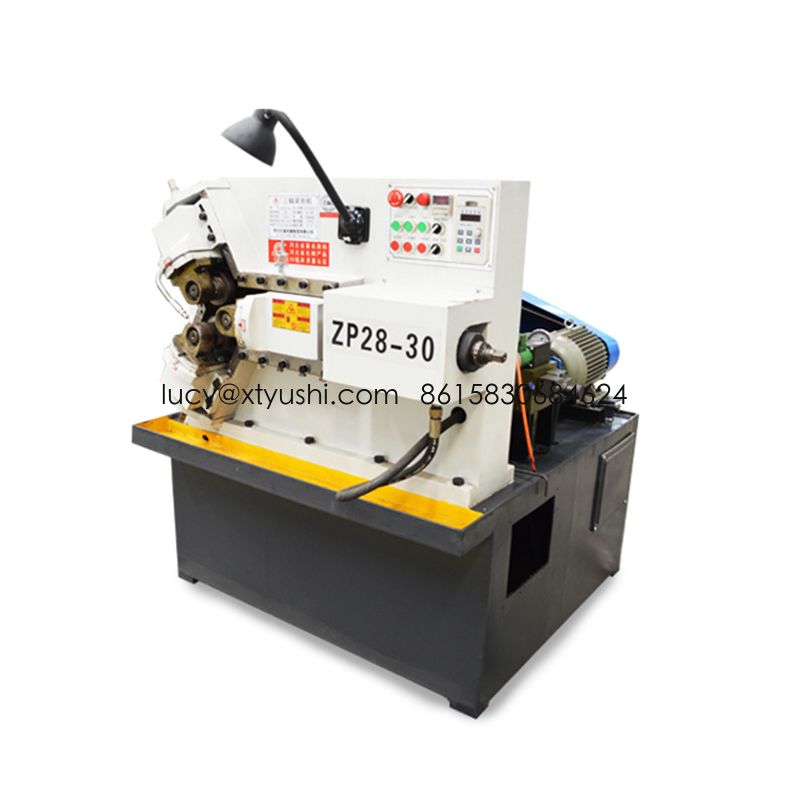What are the three types of rolling machines?

Rolling machines are essential equipment used to bend and form metal plates, sheets, or profiles into cylindrical, curved, or conical shapes. They are widely used in industries such as metal fabrication, pressure vessel manufacturing, automotive parts production, pipeline construction, and shipbuilding.
Although rolling machines come in many configurations, they are commonly classified into three main types based on their roller arrangement and forming mechanism:
1. Two-Roll Rolling Machine
Overview
A two-roll rolling machine uses two large rollers to feed and press material. It is primarily used for thin metal sheets, soft materials, rubber, and composite sheet forming.
Key Features
• High-speed operation
• Suitable for continuous production lines
• Often used in mass production environments
Common Applications
• Plastic film production
• Rubber sheet processing
• Flexible metal strip forming
• Laboratory material testing
This machine is not typically used for heavy plate bending, because it lacks sufficient forming control compared to three- or four-roll machines.
2. Three-Roll Rolling Machine
Overview
The three-roll rolling machine is the most commonly used type in metal fabrication. It features three rollers arranged either in a pyramid (pyramid-style) or with one roller adjustable above the other two (variable geometry).
Types of Three-Roll Machines
• Mechanical Three-Roll
• Hydraulic Three-Roll
• Asymmetric Three-Roll
Key Advantages
• Can roll cylinders, cones, and arcs
• Suitable for both medium and heavy plate rolling
• More flexible forming control compared to two-roll machines
Common Applications
• Pressure vessels
• Boiler tanks
• Storage tanks
• General sheet metal fabrication
Three-roll bending machines offer good accuracy and strong forming capability, making them suitable for most industrial fabrication shops.
3. Four-Roll Rolling Machine
Overview
The four-roll rolling machine uses four rollers: one top roller, one bottom support roller, and two side rollers for precise bending and position adjustment.
Key Advantages
• Can pre-bend both plate ends without removing the material
• Enables faster and more accurate rolling
• Excellent for large-scale production and thicker plates
• Allows full automatic CNC control
Where It’s Used
• Large industrial tank and pipe manufacturing
• Ship hull assembly
• Heavy machinery manufacturing
• Wind tower and large pipeline fabrication
• Four-roll machines provide superior precision and efficiency compared to three-roll machines, making them ideal for industrial mass production.
Comparison Table
| Feature | Two-Roll Machine | Three-Roll Machine | Four-Roll Machine |
|---|---|---|---|
| Suitable Materials | Thin & soft sheets | General steel plates | Medium to thick plates |
| Forming Precision | Low to Medium | Medium | High |
| Automation Level | Low | Medium | High, supports CNC |
| End Pre-Bending | No | Partial | Yes, excellent |
| Best Use Case | Continuous sheet production | General fabrication | High accuracy industrial production |
The three main types of rolling machines are:
Two-Roll Rolling Machine – For thin sheet or flexible material forming
Three-Roll Rolling Machine – A versatile solution for bending plates into cylinders and cones
Four-Roll Rolling Machine – Offers the highest precision and efficiency for thick plate and industrial-scale production
Choosing the right rolling machine depends on:
Plate thickness and width
Required accuracy
Production volume
Level of automation needed
Understanding these differences helps manufacturers and fabricators select the best rolling machine for their application.
Thread Rolling Machine,CNC thread rolling machine
Contact Us
E-mail :
Mobile/whatsapp/wechat::
Address:Xingjiawan Town Industrial Zone, Renze District, Xingtai City, Hebei Province.






